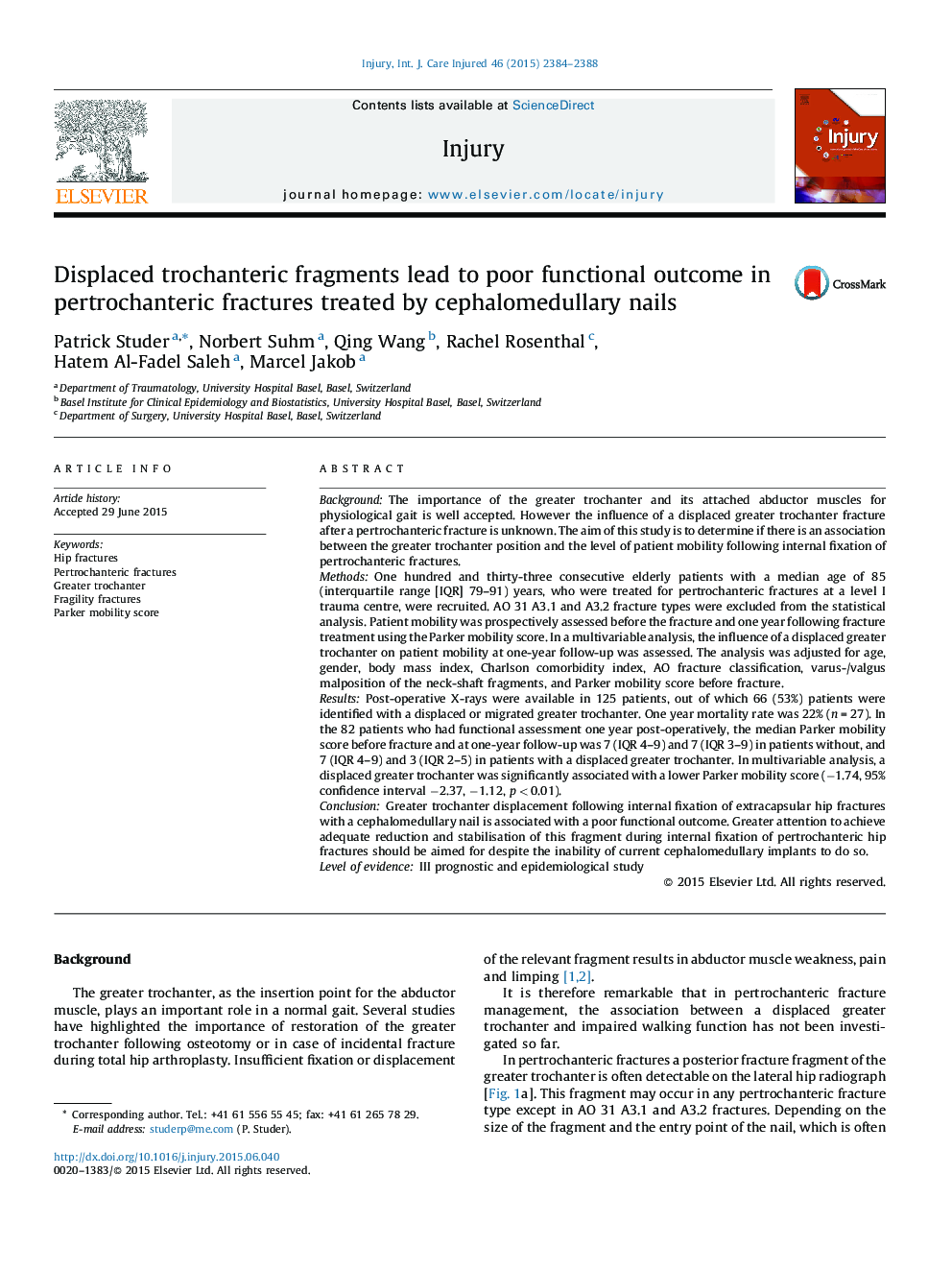| کد مقاله | کد نشریه | سال انتشار | مقاله انگلیسی | نسخه تمام متن |
|---|---|---|---|---|
| 6082993 | 1205983 | 2015 | 5 صفحه PDF | دانلود رایگان |
BackgroundThe importance of the greater trochanter and its attached abductor muscles for physiological gait is well accepted. However the influence of a displaced greater trochanter fracture after a pertrochanteric fracture is unknown. The aim of this study is to determine if there is an association between the greater trochanter position and the level of patient mobility following internal fixation of pertrochanteric fractures.MethodsOne hundred and thirty-three consecutive elderly patients with a median age of 85 (interquartile range [IQR] 79-91) years, who were treated for pertrochanteric fractures at a level I trauma centre, were recruited. AO 31 A3.1 and A3.2 fracture types were excluded from the statistical analysis. Patient mobility was prospectively assessed before the fracture and one year following fracture treatment using the Parker mobility score. In a multivariable analysis, the influence of a displaced greater trochanter on patient mobility at one-year follow-up was assessed. The analysis was adjusted for age, gender, body mass index, Charlson comorbidity index, AO fracture classification, varus-/valgus malposition of the neck-shaft fragments, and Parker mobility score before fracture.ResultsPost-operative X-rays were available in 125 patients, out of which 66 (53%) patients were identified with a displaced or migrated greater trochanter. One year mortality rate was 22% (n = 27). In the 82 patients who had functional assessment one year post-operatively, the median Parker mobility score before fracture and at one-year follow-up was 7 (IQR 4-9) and 7 (IQR 3-9) in patients without, and 7 (IQR 4-9) and 3 (IQR 2-5) in patients with a displaced greater trochanter. In multivariable analysis, a displaced greater trochanter was significantly associated with a lower Parker mobility score (â1.74, 95% confidence interval â2.37, â1.12, p < 0.01).ConclusionGreater trochanter displacement following internal fixation of extracapsular hip fractures with a cephalomedullary nail is associated with a poor functional outcome. Greater attention to achieve adequate reduction and stabilisation of this fragment during internal fixation of pertrochanteric hip fractures should be aimed for despite the inability of current cephalomedullary implants to do so.Level of evidenceIII prognostic and epidemiological study
Journal: Injury - Volume 46, Issue 12, December 2015, Pages 2384-2388
